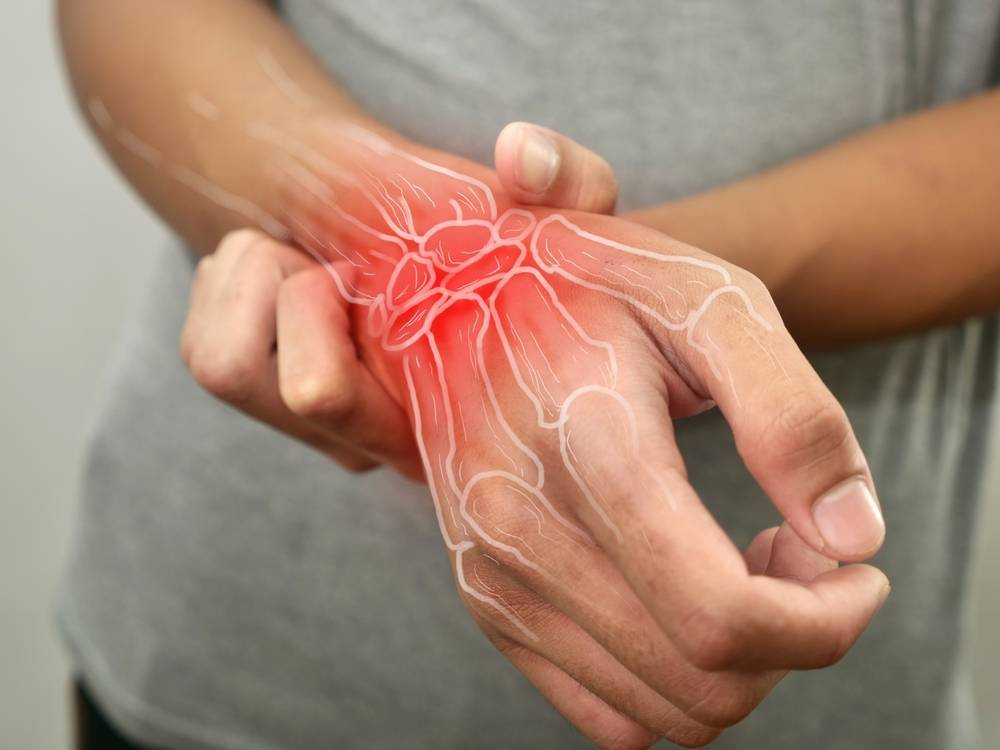Many people with joint conditions like osteoarthritis and rheumatoid arthritis notice increased discomfort during humid weather.
Research has confirmed that there is a strong link between humidity and joint pain.
When humidity levels rise, changes in the body can lead to more pain and stiffness. This makes daily activities more challenging and affects overall quality of life. Understanding how humidity influences joint pain can help sufferers better manage their symptoms.
Influence of Humidity on Joint Pain
Research shows that high humidity levels can worsen joint pain in conditions like osteoarthritis and rheumatoid arthritis. One study found that when humidity levels reached 79-85%, patients experienced nearly double the risk of moderate to severe pain in hand osteoarthritis.
Another analysis revealed a positive correlation between relative humidity and joint pain. Additionally, a study found that 82% of patients with chronic rheumatic diseases reported increased pain levels due to humidity, highlighting how weather sensitivity significantly impacts their condition.
Interaction of Humidity and Temperature
The relationship between humidity and joint pain is complex, especially when combined with temperature changes. Cold, humid conditions can exacerbate joint pain more than humidity alone. Research indicates that in older adults with osteoarthritis, joint pain significantly increases when high humidity coincides with lower temperatures.
This combination can lead to greater stiffness and discomfort, as colder temperatures may cause muscles to contract and joints to become less flexible. The body’s response to humidity and cold can make daily tasks increasingly challenging, impacting overall mobility and quality of life. Understanding these interactions helps patients anticipate flare-ups and manage symptoms effectively.
Patient Perception and Clinical Outcomes
Patients with joint conditions often report that humid weather intensifies their symptoms. In a survey of individuals with rheumatic diseases, 74% noted that their pain worsened on humid, cold days.
These reports are supported by clinical studies, which show that higher humidity levels can lead to increased joint inflammation and pain. This inflammation can exacerbate stiffness, making movement more difficult. As a result, patients may experience challenges in daily activities, highlighting the significant impact of weather on their quality of life.
Effects on Functional Capacity
High humidity levels not only increase pain but also affect functional capacity in people with joint conditions. Studies have shown that patients with rheumatic disorders experience reduced mobility and increased difficulty in daily tasks during humid conditions.
The combination of pain and stiffness can make simple activities, such as walking or climbing stairs, much harder. This reduction in functional capacity significantly impacts their quality of life, as they may need to limit activities or seek additional support during humid weather.
Evidence from Animal Studies
Animal studies provide additional insights into the effects of humidity on joint pain. Research involving rats has shown that high humidity conditions can lead to increased joint inflammation.
These findings support observations in humans, suggesting that humidity may exacerbate symptoms by promoting inflammatory processes in the joints. While these models are not perfect, they help researchers understand the biological mechanisms behind increased pain in humid conditions. This information can contribute to developing better management strategies for those affected by joint pain.
Managing Joint Pain in Humid Conditions
Humidity can significantly impact joint pain, especially in conditions like osteoarthritis and rheumatoid arthritis. Increased pain and stiffness during humid weather can affect daily activities and overall quality of life. Recognising these patterns helps patients manage symptoms and adapt routines, maintaining well-being despite challenging weather conditions.
References
- Wang, L., Xu, Q., Chen, Y., Zhu, Z., & Cao, Y. (2023). Associations between weather conditions and osteoarthritis pain: a systematic review and meta-analysis. Annals of Medicine (Helsinki)/Annals of Medicine, 55(1). https://doi.org/10.1080/07853890.2023.2196439
- Pezot, M., Badie, R. L., Tuffet, S., Rousseau, A., Richette, P., Fautrel, B., Berenbaum, F., Courties, A., & Sellam, J. (2023). POS1360 PATIENTS ARE ALWAYS RIGHT! ASSOCIATION BETWEEN HUMIDITY LEVEL AND PAIN EXPERIENCE IN HAND OSTEOARTHRITIS. https://doi.org/10.1136/annrheumdis-2023-eular.1229
- Savage, E. M., McCormick, D., McDonald, S., Moore, O., Stevenson, M., & Cairns, A. P. (2014). Does rheumatoid arthritis disease activity correlate with weather conditions? Rheumatology International, 35(5), 887–890. https://doi.org/10.1007/s00296-014-3161-5
- Ng, J., Scott, D., Taneja, A., Gow, P., & Gosai, A. (2004). Weather changes and pain in rheumatology patients. APLAR Journal of Rheumatology, 7(3), 204–206. https://doi.org/10.1111/j.1479-8077.2004.00099.x
- Timmermans, E. J., Schaap, L. A., Herbolsheimer, F., Dennison, E. M., Maggi, S., Pedersen, N. L., Castell, M. V., Denkinger, M. D., Edwards, M. H., Limongi, F., Sánchez-Martínez, M., Siviero, P., Queipo, R., Peter, R., Van Der Pas, S., & Deeg, D. J. (2015). The Influence of Weather Conditions on Joint Pain in Older People with Osteoarthritis: Results from the European Project on OSteoArthritis. the Journal of Rheumatology/Journal of Rheumatology, 42(10), 1885–1892. https://doi.org/10.3899/jrheum.141594
- Ziade, N., Hmamouchi, I., Kibbi, L. E., Daou, M., Abdulateef, N., Abutiban, F., Elzorkany, B., Dahou-Makhloufi, C., Hamdi, W., Emadi, S. A., Halabi, H., Alnaqbi, K. A., Saoud, S. a. A., Hashad, S., Niamane, R., Rakawi, M. E., Kazkaz, L., Saad, S., Eissa, M., . . . Masri, B. (2022). Telehealth in rheumatology: the 2021 Arab League of Rheumatology Best Practice Guidelines. Rheumatology International, 42(3), 379–390. https://doi.org/10.1007/s00296-021-05078-w
- Bai, Y. J., Jiang, D. X., An, N., Shen, H. B., & Hu, Y. Q. (2012). Effects of cold-damp and hot-damp environment on VEGF and IL-1 expression in joint cartilage cells in adjuvant arthritis in rats. Deleted Journal, 32(2), 256–260. https://doi.org/10.1016/s0254-6272(13)60021-7

